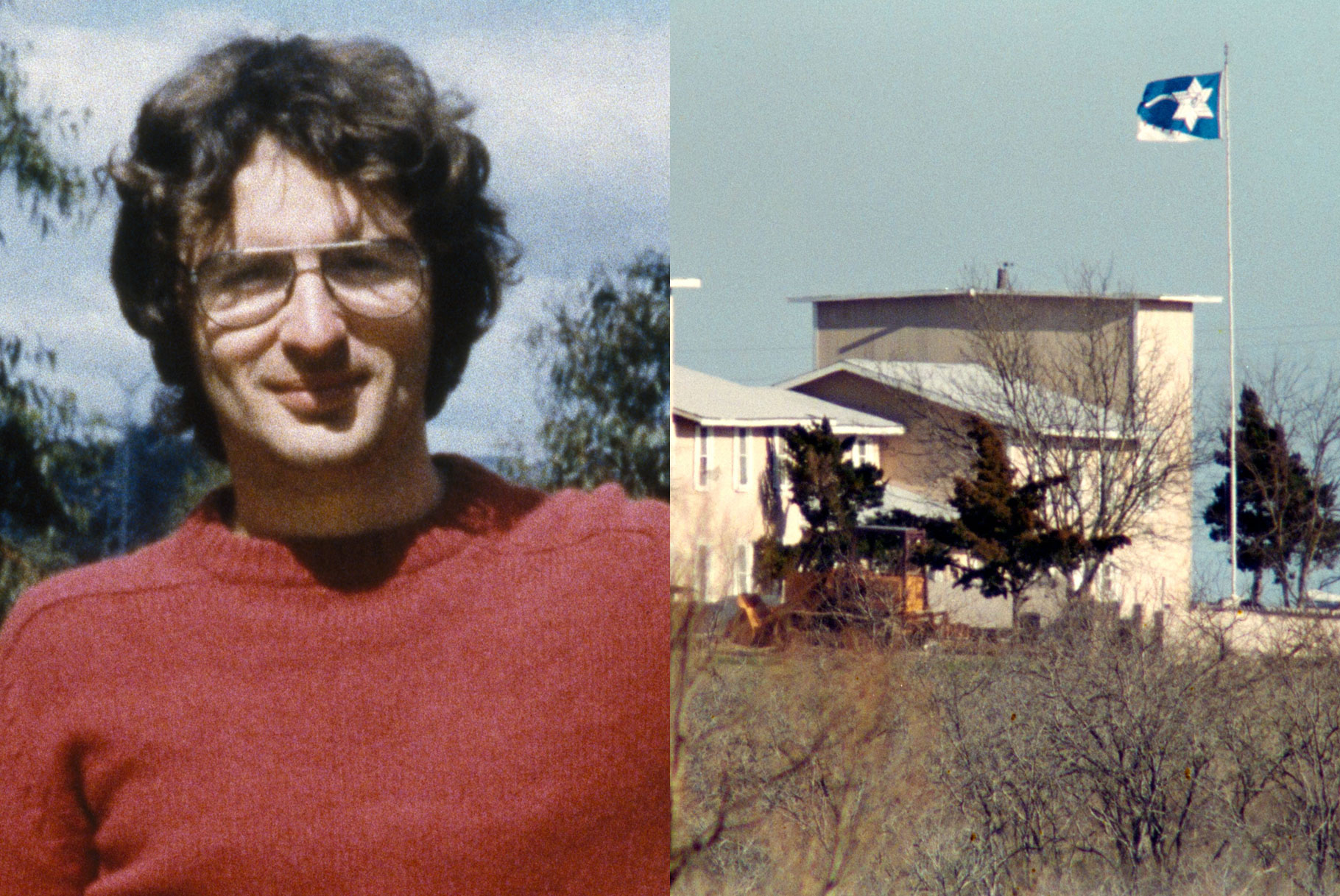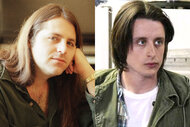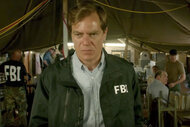Create a free profile to get unlimited access to exclusive videos, breaking news, sweepstakes, and more!
So Why Was David Koresh's Group In 'Waco' Called The Branch Davidians, Anyway?
The Branch Davidians are mostly known for the deadly 1993 siege in Waco, Texas — but the Branch Davidian Seventh-Day Adventists group claims that the David Koresh-led group weren't even real Branch Davidians at all.

The name Branch Davidians is most synonymous with the tragic 1993 siege in Waco, Texas which resulted in the death of 86 people. It’s a tragedy that has once again entered America’s collective consciousness after Netflix recently added “Waco” — a 2018 show based on the tragic events of the deadly Texas siege that originally aired on Paramount Network — to its streaming library.
In “Waco,” Branch Davidian leader David Koresh (Taylor Kitsch) is obsessed with the seven seals, which are seven symbolic seals related to an apocalyptic vision in the Book of Revelation. In that book, a scroll held in God’s right hand is marked with seven seals, GQ explained last month. The only one able to unlock the scrolls is the Lamb of God, which is what Koresh’s followers often called him, as Koresh claimed to have decoded the message of the seven seals.
In "Waco" and in real life, Koresh taught his followers at Mount Carmel compound about the scriptures and the seven seals, which he claims to have decoded. The group lived simply, without alcohol, meat, and makeup. Everyone on the grounds had to remain celibate — everyone except for Koresh. He had multiple wives, many of whom carried his children. For example, in the series, Koresh decided to take a 12-year-old girl named Michelle Jones (Julia Garner) — who happens to be his first wife’s sister — as one of his wives. He married a 12-year-old Michelle Jones in real life, too.
This — along with allegations of child abuse and illegal gun modifications — ultimately led the ATF to conduct a deadly and controversial raid upon the compound, which led to a 51-day-siege conducted by the FBI that ended in a fatal blaze. During the ordeal, 82 Branch Davidans died and four ATF officers were killed. The lead FBI negotiator at the scene, the now-retired Gary Noesner, told Oxygen.com last month that many mistakes were made by the FBI. However, he said he does still blame Koresh for the majority of deaths that occurred there.
While Noesner claimed the series painted “too positive or sympathetic of a picture of Koresh and his followers,” Waco survivor and former Mount Carmel resident David Thibodeau told Oxygen.com that the depiction was on point: that the Branch Davidian group was, as the show mostly depicts them, “good people who were there following their belief in God.” So what exactly does it mean to be a Branch Davidian?
What exactly are the Branch Davidians and why are they called that?
The original Branch Davidian movement (which they prefer to be called rather than a religion) was founded in 1959 by Ben Roden, according to the General Association of Branch Davidian Seventh-Day Adventists’ website. They derived from the Seventh-Day Adventist Church, which is known for practicing the Sabbath on Saturdays. Dr. Megan Goodwin, visiting professor at Northeastern University who studies American minority religions, told Oxygen.com that the Seventh-Day Adventists, who were founded in 1863, “were one of the least kind of controversial religions popping up in the 19th century.”
She explained the Seventh-Day Adventist Church were apocalyptic when they first started but they have since become “a small Christian community that does a lot of outreach work.”
Goodwin said they are still active now and are popular among Asian and African American communities.
The Davidian Seventh-Day Adventist Church, an offshoot of the the Seventh-Day Adventists, was established by Bulgarian teacher and immigrant Victor Houteff in the 1930s, according to the movement's website. Houteff focused on the seals and a revelation “concerning the restoration of the ancient kingdom of David in the Promised Land prior to the return of Christ,” according to the site. Houteff’s followers came to be called “Davidians” by the early 1940s because of his David revelation.
Houteff died in 1955 and Roden, a Davidian, formed the Branch Davidians shortly after with a new take on Houteff’s work. Roden’s version is called the Branch Davidians because the group branched off from the Davidian Seventh-Day Adventist Church movement. The group split off into two groups at this point: Roden’s new Branch Davidian group was called the Branch Davidian Seventh Day Adventists and those who stuck with Houteff’s teachings remained the Davidian Seventh-Day Adventists.
Roden died in 1978, and he was succeeded by his wife, Lois Roden. Koresh — then in his 20s — came to the Waco compound in 1981 where he had an affair with Lois — who was approaching 70 — according to Thibodeau’s book, “Waco: A Survivor’s Story.” The General Association of Branch Davidian Seventh-Day Adventists claim that Koresh then “illegally claimed presidency of the Branch Davidian movement and gained control over the New Mt. Carmel property in early 1988 after having a shootout with George Roden (Ben and Lois’ eldest son).”
The Davidian Seventh-Day Adventist Church website claims Koresh was illegally claiming the identity of the Branch Davidian Seventh-Day Adventists, noting that he “abandoned all things Branch Davidian, including the name, in his teachings."
Koresh, who was named Vernon Wayne Howell at the time, later changed his name to David Koresh in 1990. He changed his first name to David because he felt he had become the head of the biblical House of David, according to a 1995 PBS Frontline Koresh biography. He changed his last name to Koresh because it is the biblical name for Cyrus the Great, a Persian king who freed Jews during the Babylonian Captivity, the Smithsonian Magazine pointed out in 2018.
Koresh went on to call his followers “The Students of the Seven Seals,” and only used the Branch name for records to keep the Branch property, the Davidian Seventh-Day Adventist Church claims. Koresh taught his followers about the scriptures, and as the television series depicted, he was indeed entranced with the seven seals, Thibodeau told Oxygen.com. He promised that he would be able to decode the messages.
Thibodeau called the group a “religious community devoted to knowing what the book is about.”
“The people there really wanted to know what the scriptures said, period,” he said. “That’s it. They wanted to know what the book really said and that’s pretty rare.”
He said that Koresh’s theology was a mix of Old and New Testaments and that it mixed a good understanding of Jewish and Christian laws into it. He claimed those in the Waco compound kept the Sabbath as does the Seventh-Day Adventist Church that they are originally derived from.
Goodwin, however, told Oxygen.com that Koresh’s version was “such a radical departure” from the Seventh-Day Adventist Church, noting his claim to be the Lamb of God and the practicing of polygamy.
















